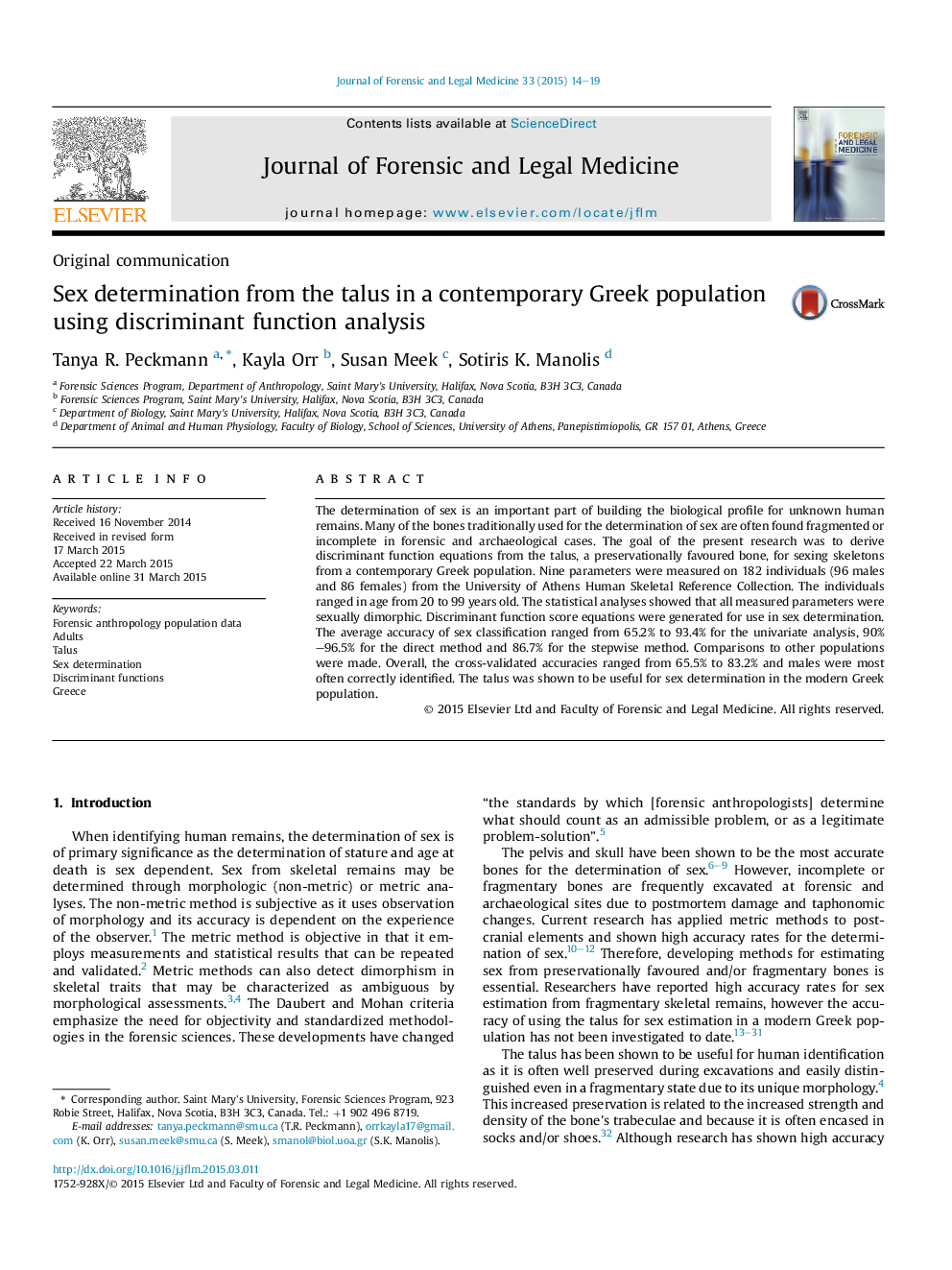| کد مقاله | کد نشریه | سال انتشار | مقاله انگلیسی | نسخه تمام متن |
|---|---|---|---|---|
| 101890 | 161299 | 2015 | 6 صفحه PDF | دانلود رایگان |
• The talus is useful for sex determination in the modern Greek population.
• Discriminant function score equations were generated for use in sex determination.
• Accuracy of sex classification ranged between 65.2% and 96.5%.
• Comparisons to other populations show sex determination ranges from 65.5% to 83.2%.
The determination of sex is an important part of building the biological profile for unknown human remains. Many of the bones traditionally used for the determination of sex are often found fragmented or incomplete in forensic and archaeological cases. The goal of the present research was to derive discriminant function equations from the talus, a preservationally favoured bone, for sexing skeletons from a contemporary Greek population. Nine parameters were measured on 182 individuals (96 males and 86 females) from the University of Athens Human Skeletal Reference Collection. The individuals ranged in age from 20 to 99 years old. The statistical analyses showed that all measured parameters were sexually dimorphic. Discriminant function score equations were generated for use in sex determination. The average accuracy of sex classification ranged from 65.2% to 93.4% for the univariate analysis, 90%–96.5% for the direct method and 86.7% for the stepwise method. Comparisons to other populations were made. Overall, the cross-validated accuracies ranged from 65.5% to 83.2% and males were most often correctly identified. The talus was shown to be useful for sex determination in the modern Greek population.
Journal: Journal of Forensic and Legal Medicine - Volume 33, July 2015, Pages 14–19
